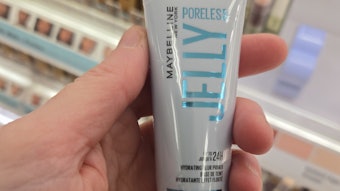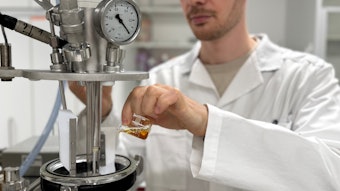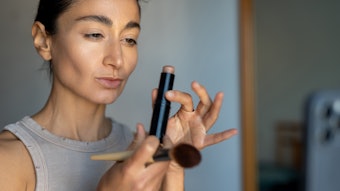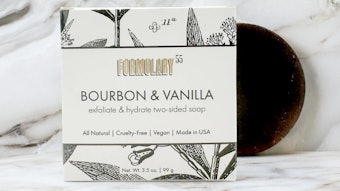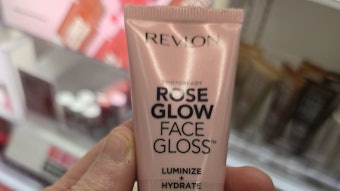
Editor’s note: Cosmetics & Toiletries is excited to welcome Kelly Dobos, president, Society of Cosmetic Chemists, and cosmetics technical manager, Americas, Sun Chemical, as the new author of our “Formulating on Trend” column. In this role, Dobos will identify hot cosmetic trends and address how the formulator can utilize novel technologies to create these popular effects.
Color trends come and go, but richly pigmented lip colors continue to be popular. Brands such as Milk Makeup claim 30% pigments in its demi-matte lipstick, and Maybelline markets eight times more pigment per drop in its Color Jolt Intense Lip Paint. High pigment loads deliver bold, intense color, but also help deliver consumer expectations that the payoff matches the color of the lip gloss bulk or lipstick bullet.
Formulating highly pigmented cosmetics can present a unique challenge for cosmetic chemists, but with careful attention to parameters such as dispersion and pigment selection, these types of products can be successfully developed.
Wetting and Dispersion of Pigments
Classical cosmetic pigments are ground and dispersed prior to adding to the waxes, oils and other components of lipstick and lip gloss. As dry powders, pigment particles are crystalline in nature and these crystals exist in varying degrees of aggregation and agglomeration. These aggregates and agglomerates must be broken down to primary particle sizes in order to achieve full color development through the process of dispersion.1
Pigments must first be wet out prior to dispersion. Wetting is the replacement of air surrounding the particles by a suitable solvent or binder, and can be prepared with simple mixing and left to sit for several hours or overnight prior grinding. Selection of wetting agents can enhance the amount of color payoff delivered from a lipstick.2 Historically, castor oil was a popular wetting and dispersion vehicle. Today there are numerous oils, emollients and silicones from which to choose.3
Innovative wetting agents have been developed to meet the needs of formulators working to incorporate high pigment concentrations. Palm acid/adipic acid/pentaerythritol crosspolymera, for example, is a structuring and pigment wetting agent that can enhance payoff and vibrancy. Another wetting agent, tridecyl trimellitate (and) triisostearyl citrateb, is particularly useful for dispersing dry high pigment loads in color cosmetics with minimal mixing when micronized pigments are used.
The wide variety of pigment chemistries available in cosmetics presents an interesting challenge in developing various shades of lip color.
Pigment Selection
The wide variety of pigment chemistries available for cosmetics presents an interesting challenge in developing various shades of lip color. Attention must be paid not only to stability and regulatory considerations, but also the cost and oil absorption of the pigments, which rise in importance when concentrations are increased.4, 5
The cost of cosmetic pigments can be quite variable. While carmine is a bright shade of red, it can be quite costly because it is sourced from a specific type of beetle that is harvested only in Peru. Red 6 and Red 7 lakes are the two most commonly used pigments in lip colors because of their bright shades, along with their good stability properties and monetary value.
These main colors can be blended with smaller amounts of other pigments to achieve many different shades. Iron oxides (red, yellow and black) also have good economic value but the colors are dull and more suited to nude shades. Black iron oxide is ferromagnetic and can agglomerate, causing spots, and both black and yellow can shift red at temperatures of 125-150oC.
The ability of pigments to absorb oil also varies—this can affect the hardness of a lipstick when trying to balance quality and skin feel across a collection of shades. Organic lakes typically exhibit higher oil absorption than inorganic pigments and fillers can be used to help balance the differences. It is worth noting that hydration of yellow iron oxide (Fe2O3·H2O) can also impact the lipstick’s integrity, so it should be used cautiously as a shading color.6
Formulating highly pigmented lipsticks and lip gloss involves a complex set of decisions to create a product that truly delights the consumer—but the cosmetic chemist’s toolbox is expanding with new materials to help achieve success.
References
- Faulkner, E. B. (2012). Pigment Dispersion. In Coloring the Cosmetic World: Using Pigments in Decorative Cosmetic Formulations (93-107). Carol Stream, IL U.S.: Allured Business Media.
- Thiemann, A., Salima-Petersen, M., and Janiche, J. (2015). Wetting Agents – Multifunctional Ingredients in Color Cosmetics. SÖFW-Journal, 141(9), 34-40.
- Hollenberg, J. (2016). Anhydrous Products Part II: Lip Products. In Color Cosmetics: A Practical Guide to Formulations (133-174). Carol Stream, IL U.S.: Allured Business Media.
- Rigano, L. (2009). Creating Colorful Cosmetics. In Beginning Cosmetic Chemistry (147-157). Carol Stream, IL U.S.: Allured Business Media.
- Finkenaur, G. (2000). Lipstick. In The Chemistry and Manufacture of Cosmetics (629-657). Carol Stream, IL U.S.: Allured Publishing Corporation.
- Faulkner, E.B. (2012). Color Selection - Stability. In Coloring the Cosmetic World: Using Pigments in Decorative Cosmetic Formulations (41-58). Carol Stream, IL U.S.: Allured Business Media.


